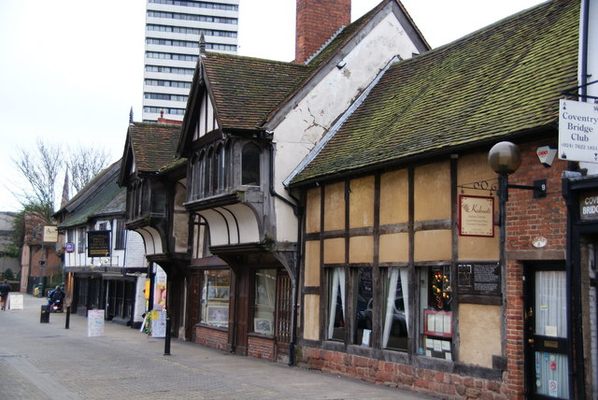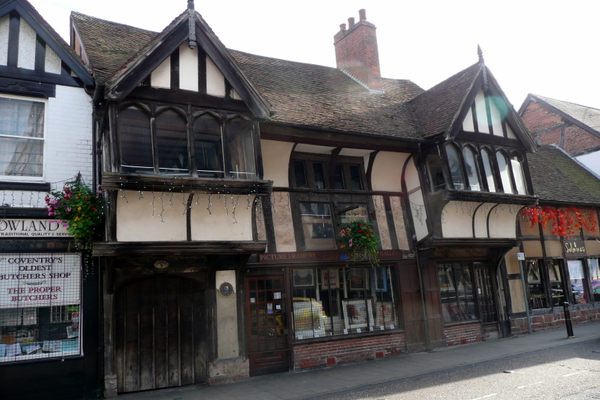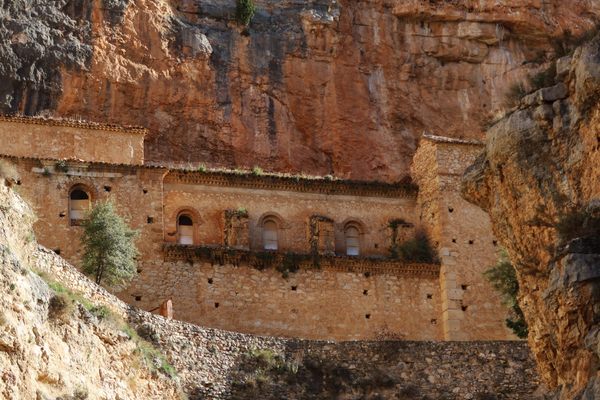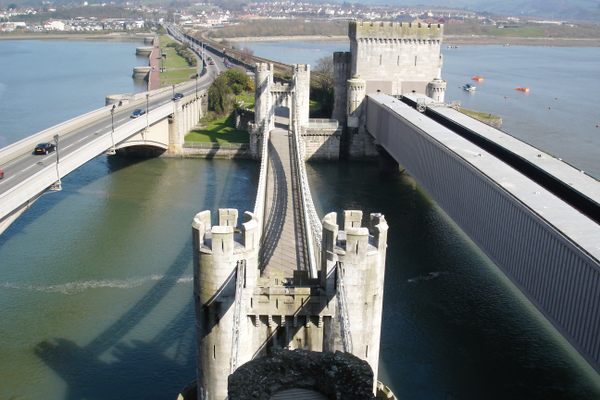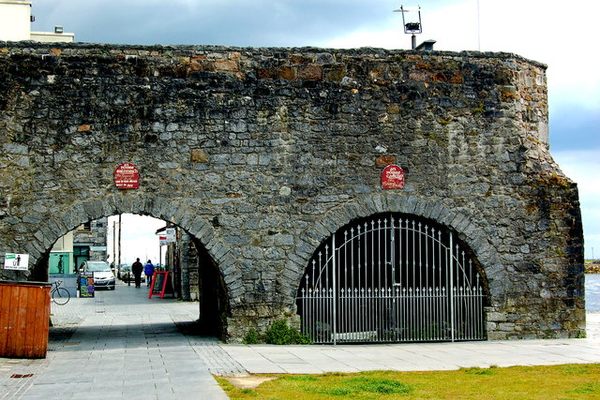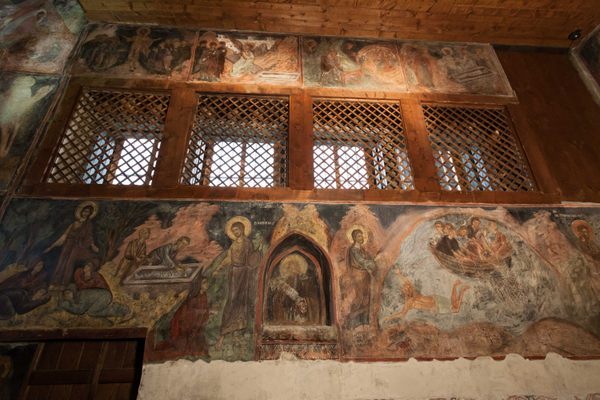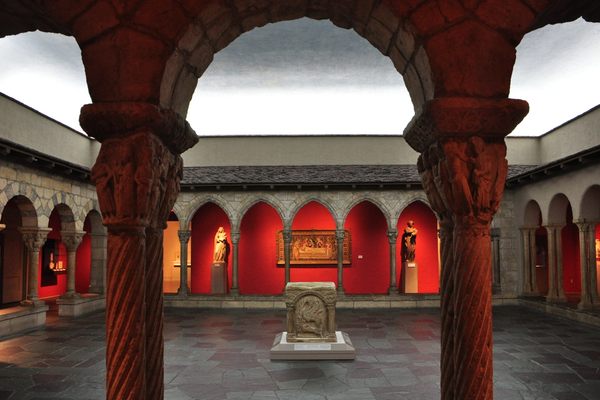About
Spon Street in Coventry was an industrial area from at least the 12th century, when it was predominantly occupied by dyers who were forced to move to the edge of the city because of the fumes from the urine they used. Other textile industries that needed good access to the nearby river were also attracted there, and the fabrics they produced were so renowned for holding their colour that it begot the saying "true as Coventry blue." This is still reflected in the all sky blue strip of Coventry City football team.
Today the street has become a sort of rest home for many of the historic timber framed buildings of the city. Coventry was bombed badly during WW2 but, being on what was then the periphery of the city centre, many of the street's timber buildings survived. During the post-war redevelopment of the city centre which largely resulted in the centre of Coventry becoming a largely glass and concrete jungle constrained by an over tight inner ring road (which cut Spon Street in half), many other medieval timber buildings were relocated to the portion of Spon Street within the ring road from elsewhere in the city in an attempt to preserve them. Some had been damaged in the bombing but others were simply just in the way.
Following the relocation of these historic buildings, in 1969 the area was designated a Conservation Area by the City Council. Spon Street, now promoted as a tourist attraction, has over 20 shops, restaurants, and pubs operating either from mediaeval buildings which are either original or relocated. It is often hard to know the difference. Look out for the Old Windmill where some of the seating has been converted from other old furniture including a seating booth created from a very large wardrobe.
Spon Street saw a shift in the industries based in the area in the 18th and 19th centuries. The street became established as an area for watchmaking throughout the early 1900s a reputation that continued well into the 20th century. This activity spread into adjoining areas where many of the otherwise un-noteworthy early 20th century buildings are 3 storey buildings with an upper workshop floor provided by inordinately large windows to admit the necessary light. Bicycle and motorcycle manufacturers then set up factories in and around Spon Street of which many examples can be found in the Coventry transport museum nearby.
Related Tags
Published
November 1, 2016
